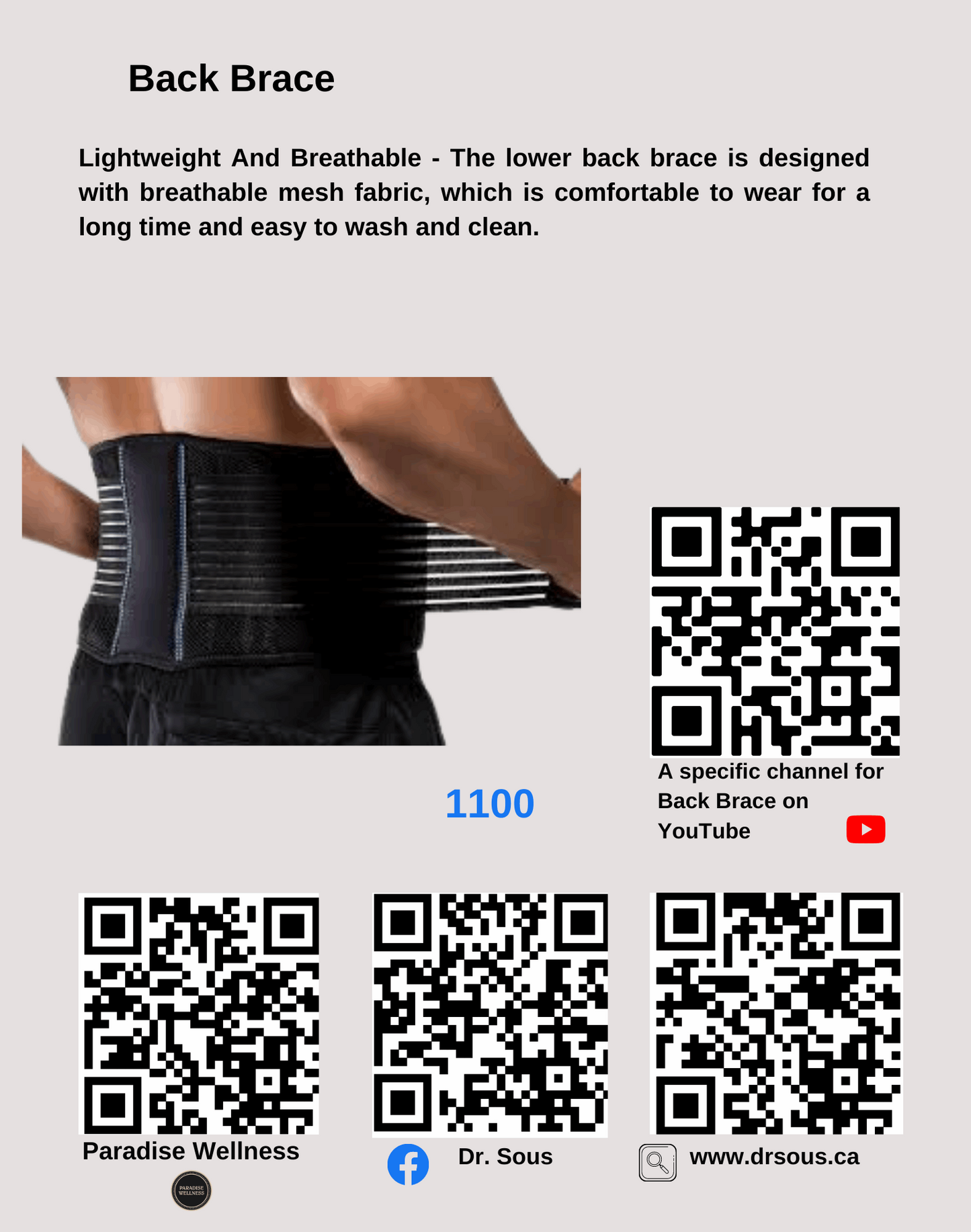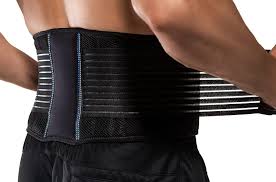1100. Back Brace
1100. Back Brace
Couldn't load pickup availability
DrSous.Ca
Back Brace
|
Size |
L25, XL 25 |
|
Age range (description) |
Adult |
|
Material |
Polyester, magnet |
|
Sport |
Exercise |
Color Black
About this item
Lightweight And Breathable - The lower back brace is designed with breathable mesh fabric, which is comfortable to wear for a long time and easy to wash and clean.
6 Stays Design - Our back support with 6 steel stays placed on both sides of the lumbar spine, perfectly fit the lumbar curve, traction and fix lumbar spine to provide additional firm lumbar support. The support plate is detachable, you could determine whether to use it according to your waist state.
Wide Application - The lumbar Support Belt is designed for office, home and outdoor use, suitable for all people. Especially those who are troubled by back pain, do exercise or want to lose weight people.
Soft Material - Slim design and easy to take on and off. Which is comfortable to wear the back brace under or on clothes.
Research Study
Back braces are a type of medical device designed to provide support and stability to the spine. They are commonly used to treat a variety of conditions, including chronic back pain, scoliosis, and herniated discs. There are several different types of back braces available, including soft, rigid, and semi-rigid options. In this article, we will explore the definition and types of back braces, the benefits and drawbacks of wearing a back brace, as well as tips for choosing and using a back brace safely. Whether you are considering using a back brace for the first time or are looking for more information about this medical device, this article will provide you with the information you need to make an informed decision.
Back braces are orthopedic devices used to support and stabilize the spine, alleviate pain, and aid in the healing process of various back conditions. According to Poliero et al. (2019), there are several types of back braces available in the market today. The first type is the rigid back brace, which is made of hard plastic or metal and restricts the movement of the spine. This type of brace is typically used for conditions such as scoliosis, kyphosis, and vertebral fractures. The second type is the soft or elastic back brace, which is made of fabric and allows for more movement than rigid braces. This type of brace is used to relieve pain and provide support for conditions such as muscle strains and herniated discs. The third type is the corset back brace, which is a combination of both the rigid and soft braces. The corset brace is designed to provide support and restrict movement while also allowing for some flexibility. This type of brace is commonly used for conditions such as spinal stenosis and degenerative disc disease. Overall, the type of back brace prescribed to a patient will depend on their individual condition and the severity of their symptoms. It is important to consult with a healthcare professional before using a back brace to ensure proper use and effectiveness.
Wearing a back brace is a common treatment for back pain, but it has both benefits and drawbacks. A back brace can provide support and stability to the spine, which can help reduce pain and improve posture. It can also limit the range of motion of the spine, which can be beneficial for patients with certain conditions such as spinal stenosis or herniated discs (Bridger). However, wearing a back brace for extended periods of time can lead to muscle weakness and atrophy, as the brace takes over the job of supporting the spine (Bridger). In addition, a back brace can be uncomfortable and may interfere with daily activities such as sitting and driving (Bridger). Moreover, the overuse of back braces can lead to dependence on the device and may prevent patients from addressing the underlying causes of their back pain (Bridger). Therefore, while back braces can be helpful for short-term pain relief and support, it is important to use them judiciously and under the guidance of a healthcare professional to avoid any negative consequences.
Back braces are commonly used to alleviate pain and provide support to the lower back. However, using a back brace incorrectly can lead to more harm than good. To ensure safe use of a back brace, it is important to choose the right type of brace and use it properly. According to Lattner and Adve, back braces should be chosen based on the specific condition being treated, as different types of back braces provide different levels of support. For example, flexible braces are suitable for mild to moderate lower back pain, while rigid braces are recommended for more severe conditions such as fractures or herniated discs. It is also important to ensure that the back brace fits properly, as a poorly fitting brace can cause discomfort and even increase the risk of injury. Additionally, back braces should not be worn for extended periods of time, as prolonged use can weaken the muscles in the lower back and lead to dependence on the brace. Finally, back braces should be used in conjunction with other treatments such as exercise and physical therapy, as relying solely on a back brace for pain relief can hinder long-term recovery. Overall, choosing the right back brace and using it safely and responsibly can lead to effective pain relief and improved back health. (Lattner and Adve).
In conclusion, back braces can be a helpful tool in managing back pain and improving posture. They provide support and stability to the spine, especially during physical activity or when sitting for extended periods of time. However, it is important to consult with a medical professional before using a back brace, as it may not be appropriate for everyone and can potentially cause further damage if used improperly. With proper use and guidance, a back brace can be a valuable aid in maintaining a healthy back and improving overall quality of life.
Work Cited
V Adve."LLVM: A compilation framework for lifelong program analysis & transformation."https://ieeexplore.ieee.org/abstract/document/1281665/
T Poliero., S Toxiri."Assessment of an on-board classifier for activity recognition on an active back-support exoskeleton."https://ieeexplore.ieee.org/abstract/document/8779519/
"Abdominal belts for manual handling in industry: the evidence for and against."https://journals.co.za/doi/abs/10.10520/AJA03796175_1789
Share




